Best pickups for metal 2025: our guide to upgrading for high gain heaven
Looking for more firepower? Our round-up of the best pickups for metal guitarists has you covered…
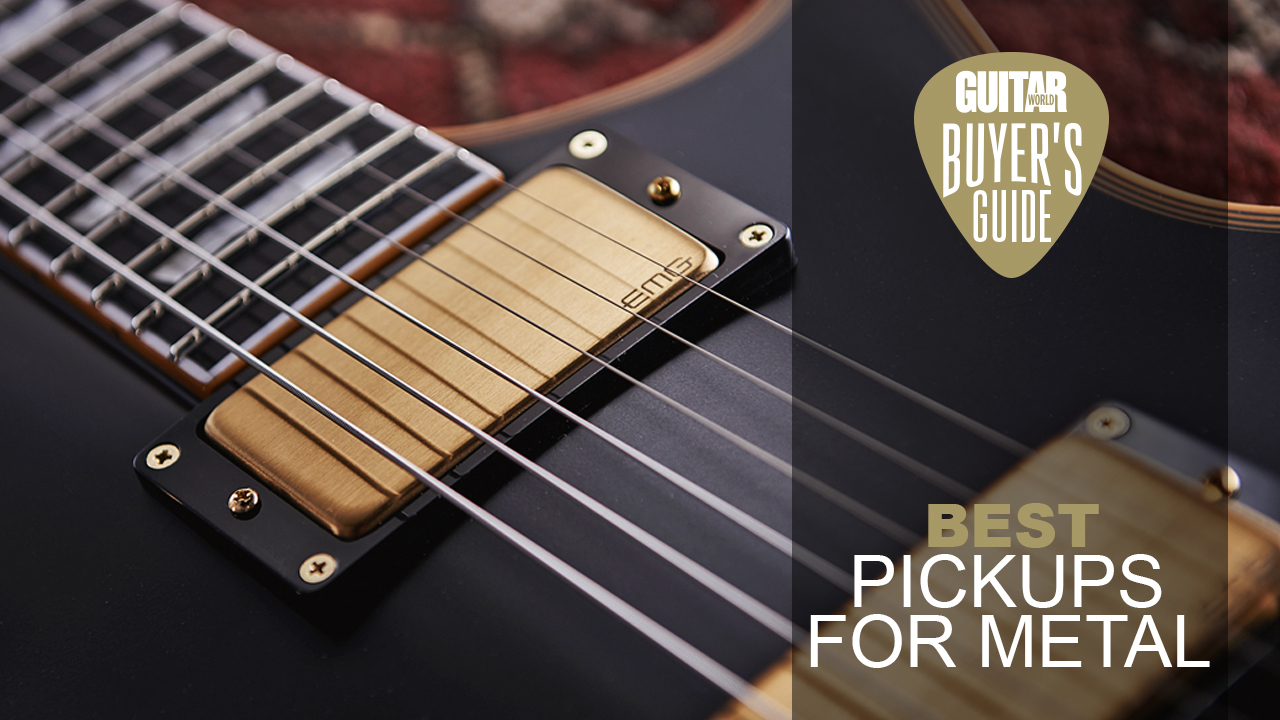
Metal encompasses the most extreme techniques and playing styles, thus it requires a pickup that can match the demands of the modern player. Whether it’s complex alternate picked riffs in 5/4 or just going ham on that open low string, the best pickups for metal laugh in the face of a dimed Metal Zone pedal, eating up the low end of an extended-range instrument, delivering articulation and clarity in the most intense playing scenarios.
Swapping pickups is probably the most cost-effective way to upgrade your guitar. As the most crucial way an electric guitar generates its sound, your pickups play a substantial role in the overall tone of your guitar, and even a beginner-level instrument can be elevated massively by getting some fresh pickups installed. It’s something that’s not too difficult to do yourself if you have the patience, and most guitar techs and luthiers will do a pickup swap for a relatively low cost, certainly cheaper than buying a new guitar.
To help make the decision easier for you, we’ve pulled together the best metal pickups out there into one handy guide. If you’re new to upgrading pickups, then be sure to check out our buying advice section at the end of the article for loads of tips and tricks. If you just want to see the best pickups for metal, then keep scrolling for our top picks.
Best pickups for metal: Guitar World's pick
Taking the top spot on our list is a modern classic in the Fishman Fluence Modern humbucker. Appearing as standard on many Ibanez, ESP, and Schecter guitars, these pickups deliver articulation even under the heaviest gain, delivering a noise-free performance that’s perfect for extreme styles of music.
Coming in second place is another classic in the EMG 81, a classic tone in the stable of metal pickups. Utilized by metal legends like Kerry King and Zakk Wylde, the EMG 81 gives you a powerful sound for riffs and solos that have made it probably the most popular metal pickup of all time.
Best pickups for metal: Product guide
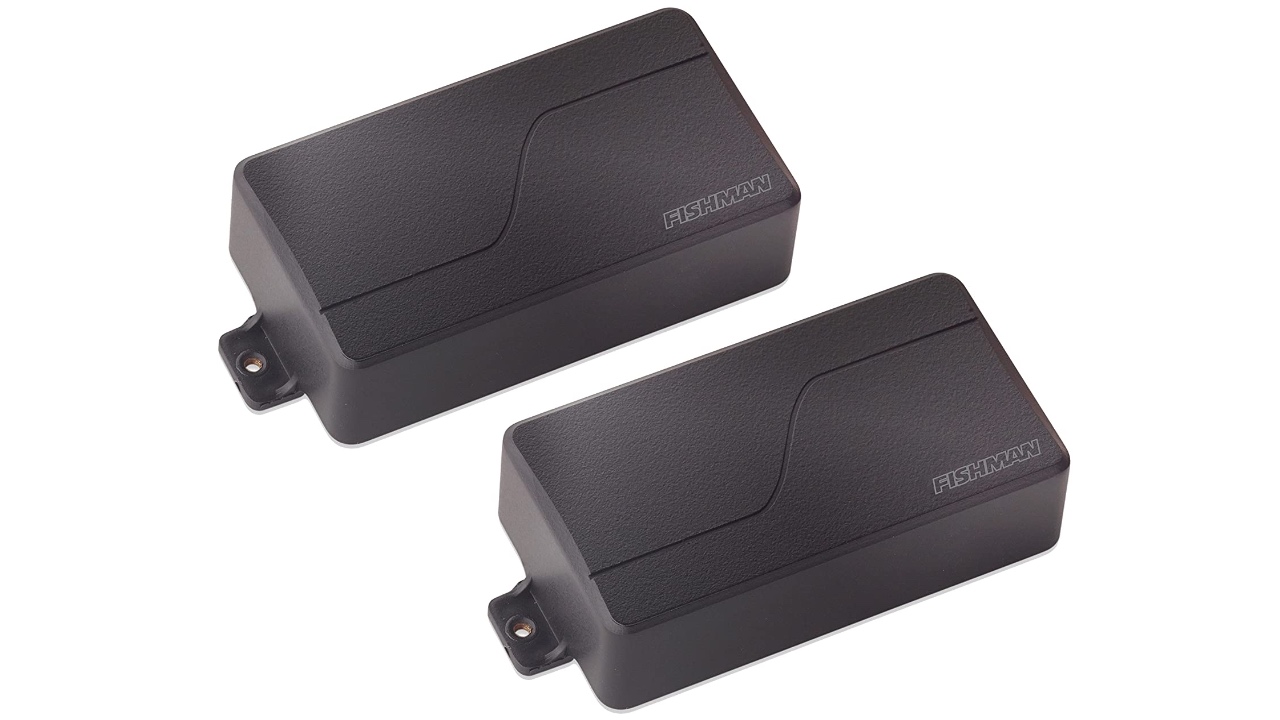
1. Fishman Fluence Modern Set
Our expert review:
Specifications
Reasons to buy
Reasons to avoid
If you’re the kind of player who wants both active and passive sounds in one set, look no further. What makes the Fluence series so innovative is how they’re made – stacking multiple layers of printed coils and interconnecting them instead of relying on the traditional method of wound copper wire coils.
As a result, each set is perfectly consistent across its dynamic and tonal range – with an alarmingly impressive accuracy and ultra fast attack response. The optional power pack is a welcome addition too – allowing the pickups to be powered via a USB-enabled back plate and saving the hassle of keeping a stock of 9-volt batteries to hand.
There are of course signature sets designed for the guitarists in Killswitch Engage, Deftones, Animals As Leaders, Lamb Of God and more – but the Moderns are a great all-rounder for your 6-, 7- or 8-string metal needs.
Watch our Fishman Fluence Modern review video

2. Seymour Duncan JB SH-4
Our expert review:
Specifications
Reasons to buy
Reasons to avoid
It might not be marketed as an especially metal pickup, but the list of heavy players who have endorsed the JB over the years speaks volumes, from Tool axeman Adam Jones, Alice In Chains singer/guitarist Jerry Cantrell and thrash pioneers Megadeth.
What makes the JB such an enduring favorite is perhaps its versatility, with better clean and blues tones compared to higher output active pickups, and still a decent amount of bite.
Often paired with the ’59 or Jazz Neck, some might say the JB is more of a rock pickup than a metal one – with nowhere near as much low-end as some of the other options in this list.
But it certainly has a way of cutting through like nothing else, which is why – almost five decades on since its invention – the JB remains a firm favorite.
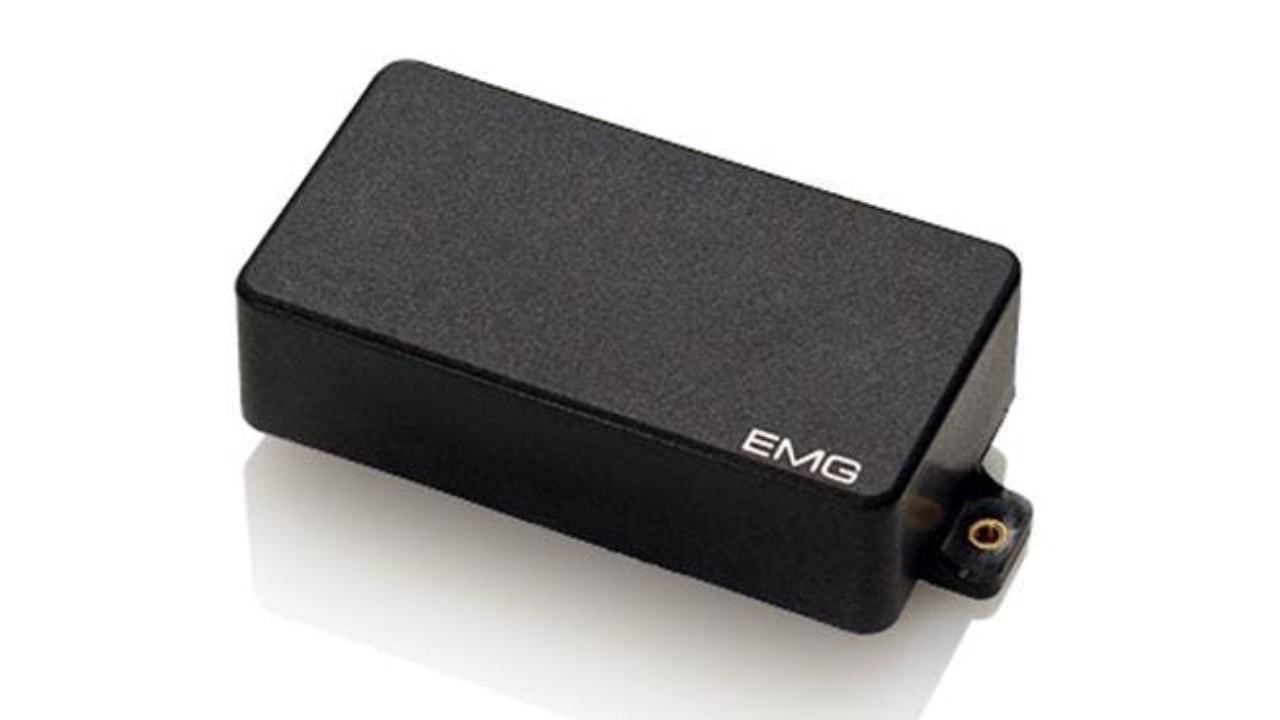
3. EMG 81
Our expert review:
Specifications
Reasons to buy
Reasons to avoid
Famously used by metal legends like Zakk Wylde and Kerry King as their go-to bridge pickup, the EMG 81 has been the first link in the chain for some of the heaviest tones ever recorded.
Usually paired with the Alnico V-equipped 85 in the neck position, the active ceramic tones are truly jaw-dropping – with the perfect EQ scoop for razor-sharp riffing and squealing harmonics.
Perhaps the only downside to the 81 is how it sounds through a clean channel, with many finding it too sterile and compressed – especially when compared to what passive pickups can offer.
But, then again, if you’re only interested in going at full throttle and have a preference for dialling in as much gain you can muster, this EMG best-seller will handle anything you can throw at it.

4. Bare Knuckle Pickups Ragnarok
Our expert review:
Specifications
Reasons to buy
Reasons to avoid
The Bare Knuckle Pickups Ragnarok sees the British boutique pickup manufacturer once again reunite with Misha Mansoor of Periphery to create one of the most versatile humbuckers we’ve ever used. Designed for aggressive playing, this beastly ‘bucker is perfect for down-tuned metal.
It’s got an absolutely huge midrange that delivers clear and consistent power chords with a hefty bottom end for all your riffing and chugging needs. The top end offers searing lead tones, pairing perfectly with excessive distortion and never sounding muddy.
What’s most surprising about this pickup is the clean tone. You can get jangly tones out of it when coil split, and it’s lovely and clear unlike many other humbuckers geared towards metal. If you’re after a humbucker that handles high gain just as well as it does those clean passages, look no further.
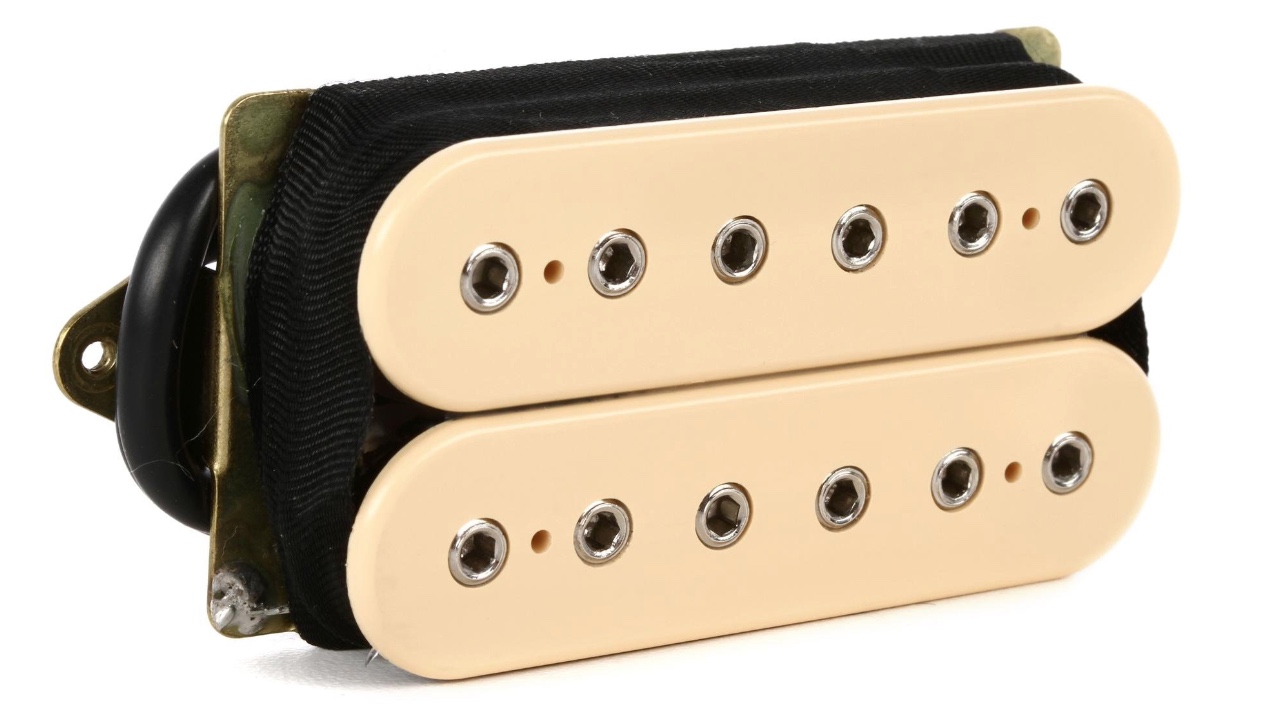
5. DiMarzio Super Distortion DP100
Our expert review:
Specifications
Reasons to buy
Reasons to avoid
Introduced in 1972, the Super Distortion was one of the first aftermarket pickups in production and effectively put Larry DiMarzio on the map. Thanks to its ceramic magnets, it offers around twice the power of a typical PAF-style pickup, enough to drive the input stage of any guitar amp harder – making it hugely popular among hard rock, metal and shred players. The list of famous users over the years includes Adrian Smith, Phil Collen, Paul Gilbert and Zoltan Bathory.
“I was 12 years old in 1972 when Larry created the first replacement pickup to be released onto the guitar scene with his Super Distortion model,” remembered Steve Vai on Instagram. “It rocked everybody’s world. And I was 16 when I was able to buy my first DiMarzio replacement pick up. From then on, DiMarzio pickups are virtually all I’ve used.”
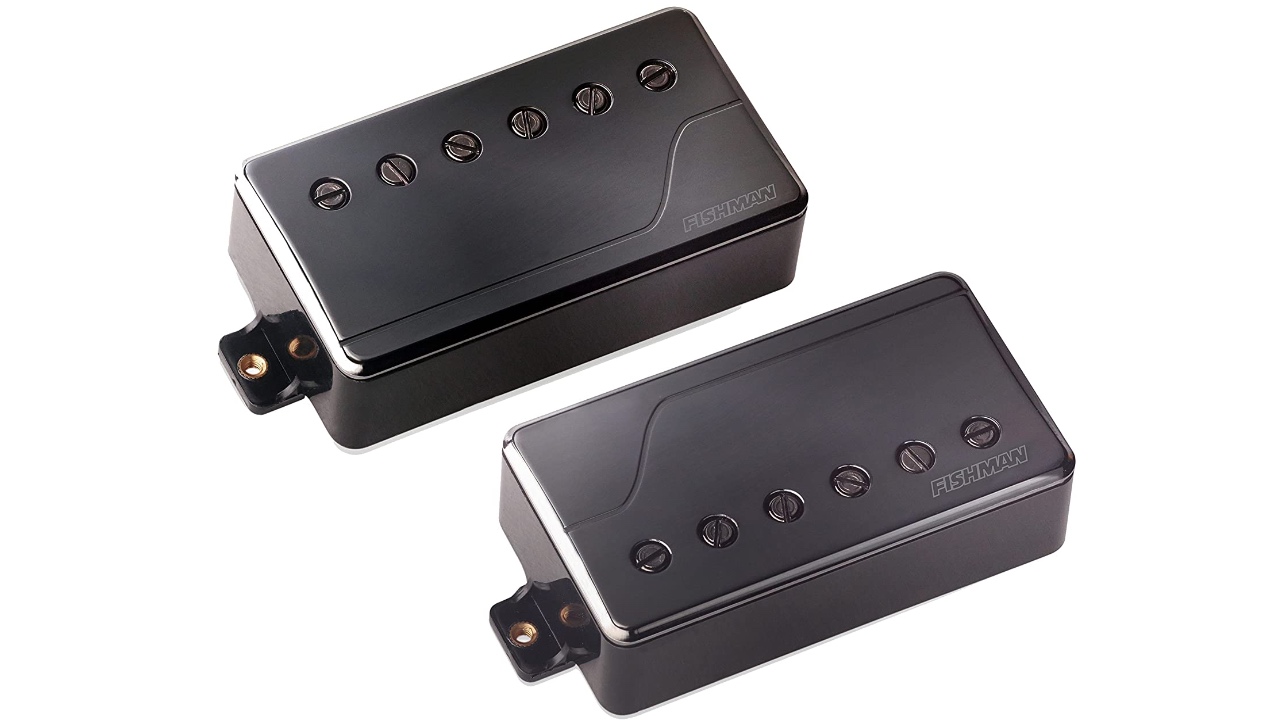
6. Fishman Fluence Classic Set
Our expert review:
Specifications
Reasons to buy
Reasons to avoid
While the Fishman Moderns could very well be the best pickup for metal right now, there’s a lot to be said for its Classic set – which, as you might expect, bring active clarity to more vintage-flavored tones.
The Fluence Classics also come with three voicings – carrying a chimey neck sound, a hot-rodded bridge tone and single-coils for both humbuckers into its cutting-edge design.
“Fishman pickups are the best pickups on the market as far as I’m concerned,” Steel Panther’s Satchel tells us in the promo for his Charvel Pro-Mod DK (fitted with the Classic set).
“They sound heavy metal. You could probably plug it in to your grandmother’s refrigerator and just turn the refrigerator up to 10, and it would sound like a modded Eddie Van Halen on Van Halen 1. How cool is that?!”
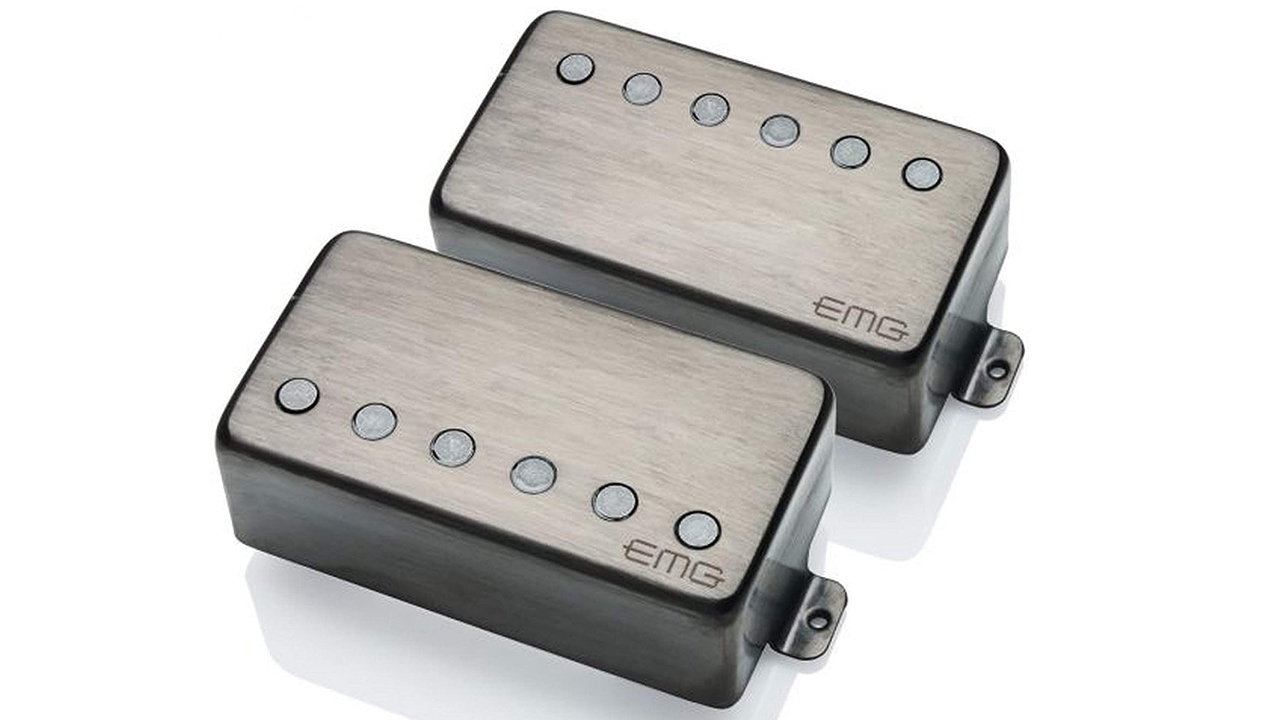
7. EMG 57/66 set
Our expert review:
Specifications
Reasons to buy
Reasons to avoid
In 2012, EMG released a new active set that was designed for players who wanted the hard attack and fast response of powered pickups, while still retaining the warmth and musicality of passives.
For those who loved the punch of the 81/85 set but needed better cleans and more versatility – truth be told, a common complaint with the Zakk Wylde set – EMG had truly delivered the goods.
In a promotional video for EMG made on the year of their release, Judas Priest guitarist Richie Faulkner recalled how he hadn’t tried them before walking on stage and “knew within three seconds this was the open and unforgiving sound” he’d been looking for, praising their consistency and character to “speak in the right places”.
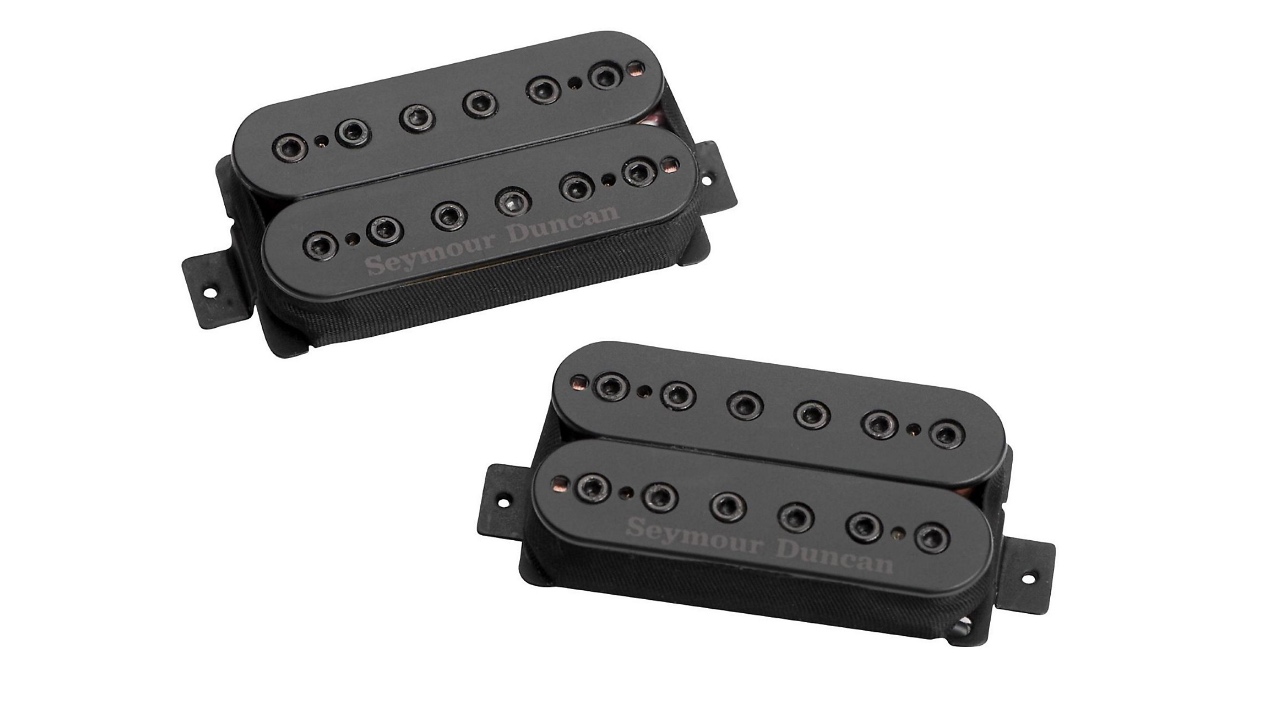
8. Seymour Duncan Mark Holcomb Alpha & Omega
Our expert review:
Specifications
Reasons to buy
Reasons to avoid
Periphery’s sound is one built on absolute precision and clarity, so it’s no wonder that guitarist Mark Holcomb’s ceramic-powered signature set deliver on those fronts.
The Seymour Duncan Alpha & Omega are available for 6-, 7- and 8-string guitars – so whether you prefer regular guitars, baritones or instruments with more than six slots in the nut, this pair will have you covered and sit among the hottest passives on the market.
While they are EQ’d to retain detail in lower tunings, they’re just as impressive in standard.
Best pickups for metal: Buying advice
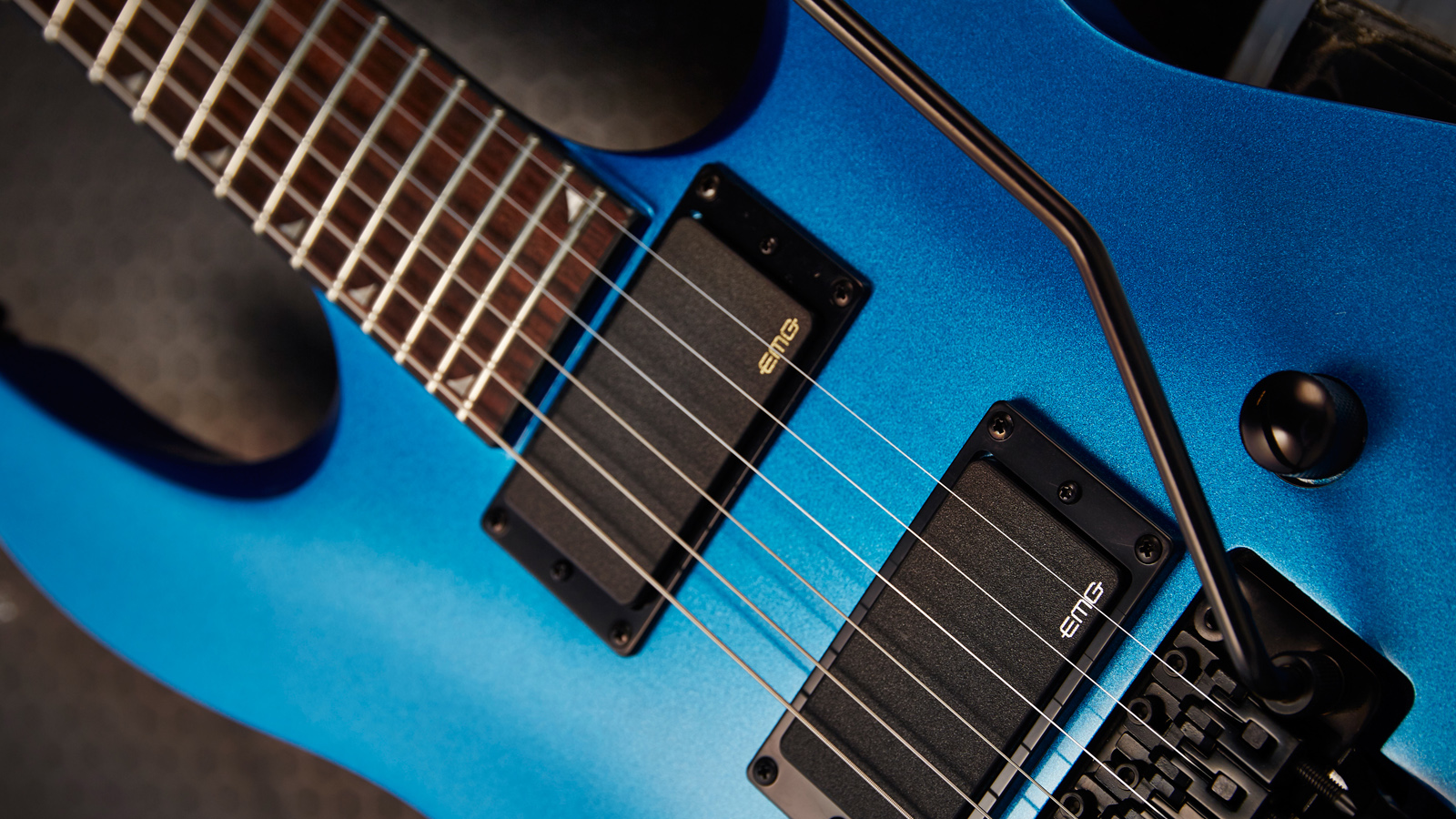
Upgrading your pickups is one of the quickest and most cost-effective ways to improve the sound of your guitar. All of your sounds are funneled through your pickups which is why they have such a massive impact on your tone. Before you think about upgrading your pickups you’ll need to think about everything from which tools need to perform the job if you’re doing it yourself, as well as understand a little more about pickups themselves.
What is the difference between active and passive pickups?
In a lot of metal guitars, you’ll find they have active pickups rather than traditional passive ones. Active pickups are more adept at hard rock and metal thanks to their higher output capacity. They tend to sound brighter and more articulate, which means they work well in high-gain scenarios, providing plenty of clarity to cut through. Active pickups require an external power source - usually a 9v battery - to operate, so you’ll need to take that into consideration if you’re going from active to passive.
Passive pickups have a lower output and thus don’t require any additional power source to work. This makes them sound more open and susceptible to playing dynamics, but less adept at dealing with extremely high gain than an active equivalent. The vast majority of guitar pickups are passive, and players love them for their expressive sound and the way they react to the volume knob.
Are humbuckers better for metal?
Every pickup on this list is a humbucker, and that’s because for the most part, they are indeed much better for metal. The main consideration is the higher output, which gives you more sustain and a thicker sound. When it comes to metal riffing you don’t want it to sound thin or weak, so this is why many metal guitarists go for humbucker-equipped guitars.
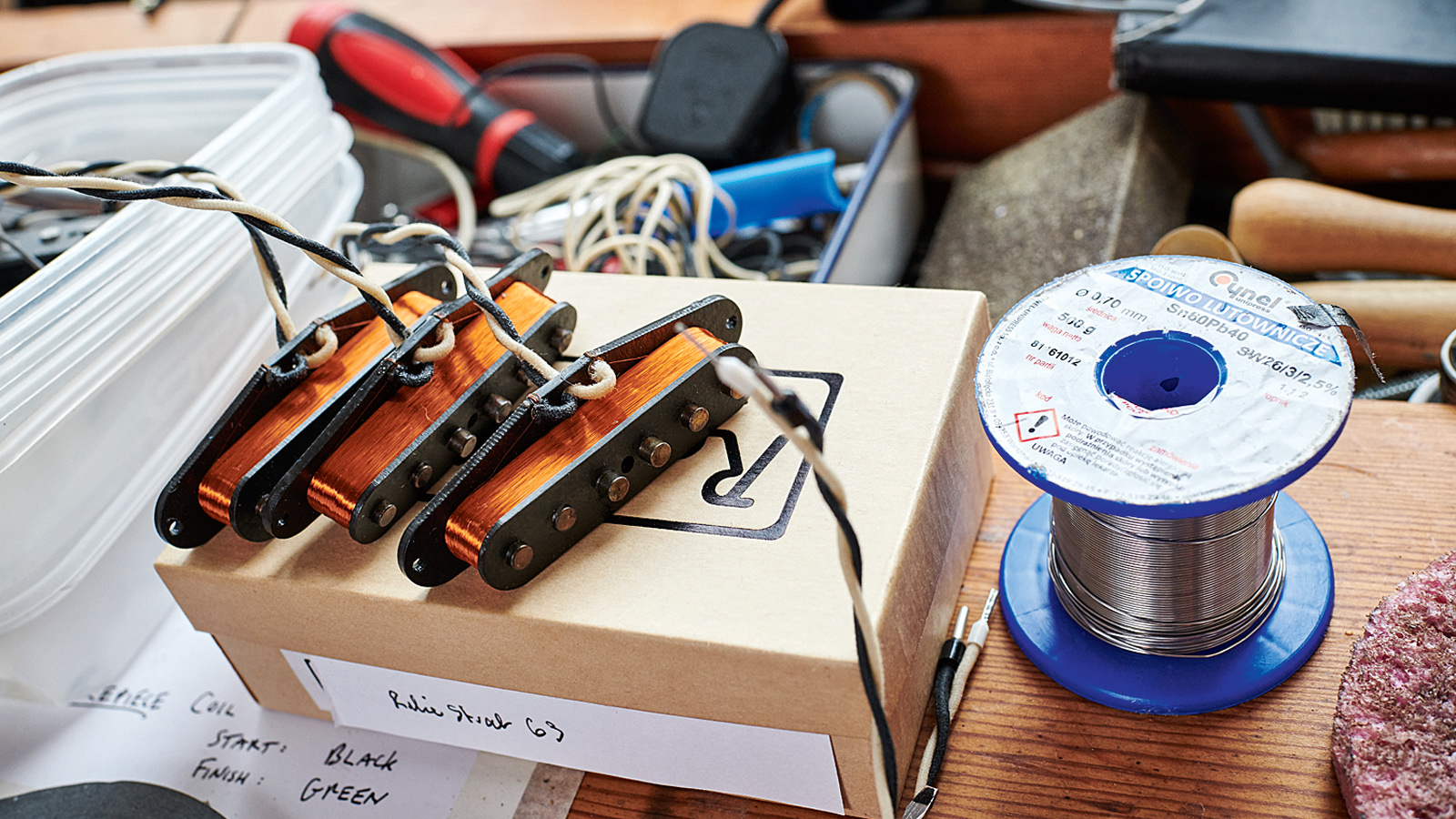
Can I install guitar pickups myself?
Installing pickups yourself is easier than you’d think. With just a few tools and know-how you can swap out a set of pickups relatively quickly, and there are tonnes of videos on the internet on how you go about swapping them. To fit pickups all you’ll need is a soldering iron, some screwdrivers, wire cutters, and some cloth to clean up and protect the body of the guitar. It really is that simple. With a few videos and some patience, you can install a brand-new set of pickups in no time. If you want some guidance check out our article on how to install humbucker pickups for some great tips and tricks.
How do I choose the right size and type of pickups for my guitar?
There are a lot of different pickups out there and not everything is a simple job. Whenever swapping like for like, for example, a humbucker for a humbucker, chances are you’ll already have the correct routing requirements to make it an easy swap. However, changing from a humbucker to a P-90 will be a completely different process. Most pickup manufacturers will list the dimensions of the pickups somewhere on their website, so measure up and check your guitar before you hit the buy button or you might be teeing yourself up for disappointment.
Another consideration when it comes to size is the spacing of the pole pieces. Ideally, you want these to line up exactly with your guitar strings, but different guitar brands have different string spacing. Bridge and neck pickups will also differ in terms of string spacing, as the string spacing gets narrower the further you move up the neck. This is why pickups will be specifically designated for the bridge, middle, or neck position.
For the most part, the differences are so small as to not really have a massive impact on your tone, but where a guitar has a locking tremolo unit, typically the strings are spaced further apart. Many manufacturers make pickup designs specifically for tremolo-equipped guitars, and these are usually denoted with the term ‘F spaced’.
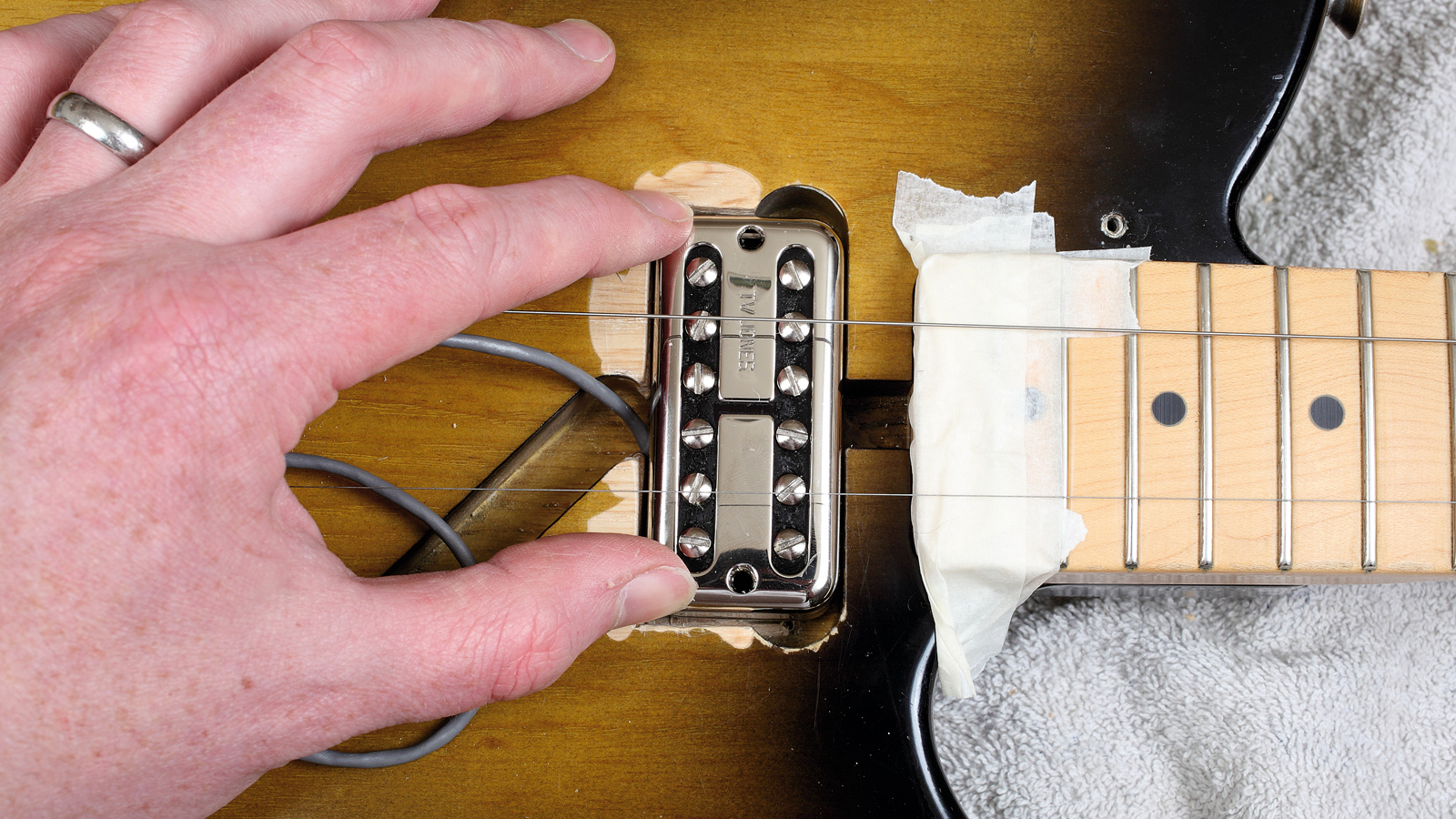
What are some common mistakes to avoid when installing guitar pickups?
If you’re swapping like for like pickups then many of these common mistakes will not apply. Usually, issues come from swapping from single coils to humbuckers or vice versa as you’re bringing the other electronics of your guitar into play.
Pot values are really important when installing a guitar pickup, both single coil and humbucker pickups prefer a different pot value - 250k and 500k respectively - otherwise you can get either an overly bright sound or something that’s too muddy.
Damaging your coil wire is another common issue. When you’re installing your pickup, be very careful not to nick any of the copper coil wire with your tools, or you’ll render your shiny new pickup unusable. The copper wire is as thin as human hair and extremely fragile, so treat it accordingly.
Not taking it to a luthier when you’re struggling would be the final issue. Installing pickups is on the surface a simple job, but sometimes guitars can have extra electronics you’re not aware of or polarity issues that result in your new pickups not being usable in different positions. The important thing to realize here is that, if you keep running into issues and can’t get it working, there’s no shame in taking it to an expert to get it fixed. Guitar techs and luthiers have seen it all and can get your guitar up and running a lot quicker with a minimum of fuss.
Find out more about how we make our recommendations and how we test each of the products in our buyer's guides.
Related buyer's guides
You can trust Guitar World
- Stay heavy with the best metal guitars
- Get the sound with the best amps for metal
- The best 7 string guitars let you get low
- Check out the best distortion pedals for metal
- Get the low down on the best basses for metal
- Buying for the first time? Have a look at best beginner guitars for metal
- Get shredding with the best Jackson guitars
All the latest guitar news, interviews, lessons, reviews, deals and more, direct to your inbox!
Amit has been writing for titles like Total Guitar, MusicRadar and Guitar World for over a decade and counts Richie Kotzen, Guthrie Govan and Jeff Beck among his primary influences as a guitar player. He's worked for magazines like Kerrang!, Metal Hammer, Classic Rock, Prog, Record Collector, Planet Rock, Rhythm and Bass Player, as well as newspapers like Metro and The Independent, interviewing everyone from Ozzy Osbourne and Lemmy to Slash and Jimmy Page, and once even traded solos with a member of Slayer on a track released internationally. As a session guitarist, he's played alongside members of Judas Priest and Uriah Heep in London ensemble Metalworks, as well as handled lead guitars for legends like Glen Matlock (Sex Pistols, The Faces) and Stu Hamm (Steve Vai, Joe Satriani, G3).
- Matt McCrackenJunior Deals Writer

